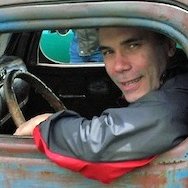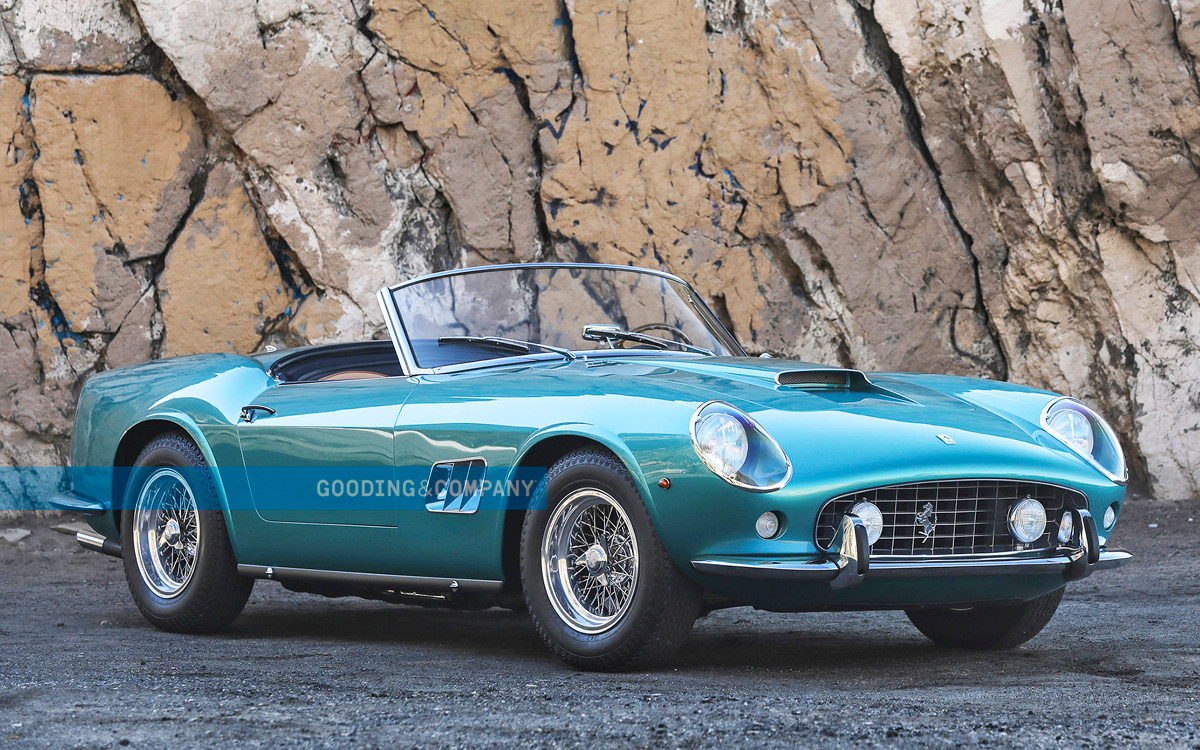Ferris Bueller Knew His Ferraris
It would be the rare thing that could thread a connection from Hollywood legends Steve McQueen and James Coburn to the surprise movie hit of 1986, “Ferris Bueller’s Day Off.” And that rare thing is a Ferrari 250 GT California, a.k.a. California Spider.
Coburn and McQueen both owned Ferrari California Spiders, which sat at the top of the Ferrari hierarchy in their day. In “Bueller,” a precocious high school schemer (played by Matthew Broderick) and his friends play hooky and drive a California Spider on adventures through Chicago. Although that California Spider was fake, a real one was used in close-up static scenes.
Gooding & Company is offering a very real 1962 Ferrari 250 GT California at its Amelia Island auction in March. Painted in a rare color, the Spider has a pre-sale estimate of $18M-$20M. Fun fact: the owner prior to the consignor bought this car, with some front suspension damage, for $2,400 in 1972. Yes, twenty-four-hundred dollars, and the body was reportedly not even damaged.
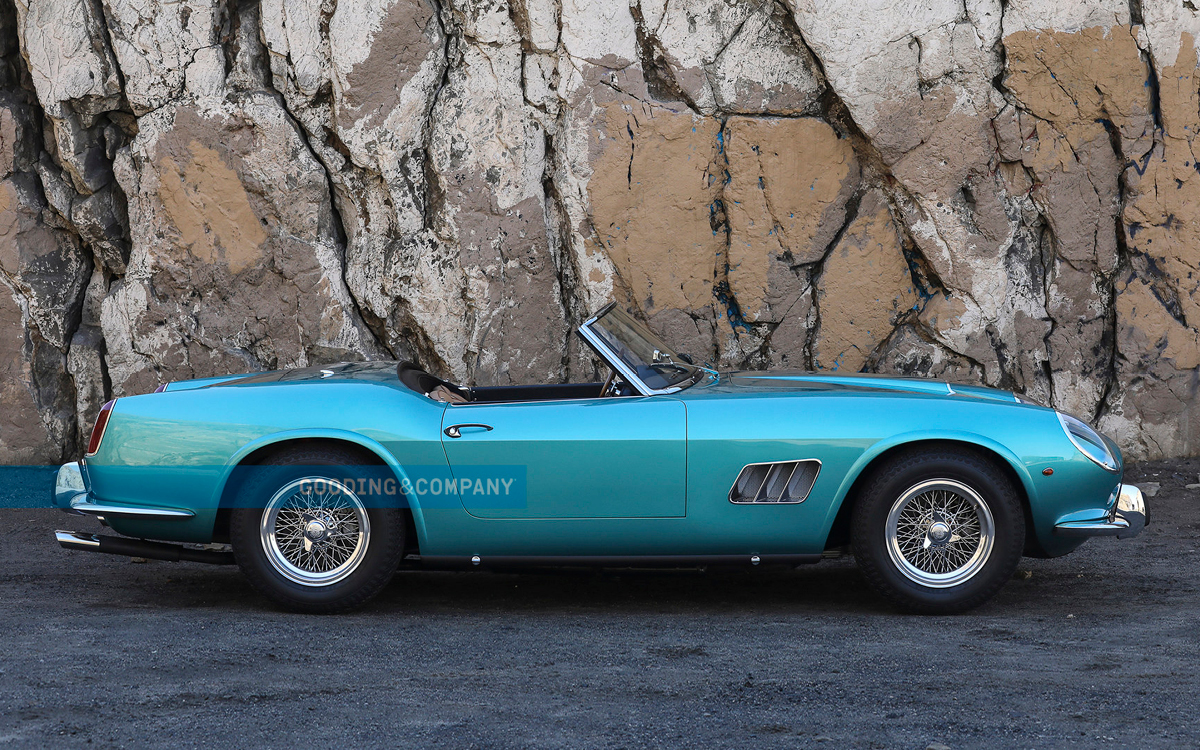
The Most Beautiful Ferrari?
Any opinion of “the most beautiful Ferrari” is, of course, purely subjective. But if you find someone who does not put the Ferrari 250 GT California Spider in their top-five, be a good friend and check their vital signs.
When you talk about the California Spider, though, you’re talking about two distinct cars, the original 1957-1959 series and the second series made from 1960-1962. Ferrari built each series on its current top performance chassis of the day. The first, known as the long-wheelbase version, was basically an open version of the fabulous 250 GT Berlinetta Competizione, a.k.a. Tour de France Berlinetta. The TdF earned its nickname name by winning the Tour de France Automobile four years in a row.
In response to requests for a lighter, faster, car than the existing 250 GT Cabriolet, Ferrari built the first California on the TdF’s 102.4-inch wheelbase chassis. With Scaglietti building the bodies, Ferrari produced exactly 50, offered in both open and covered-headlight styles.
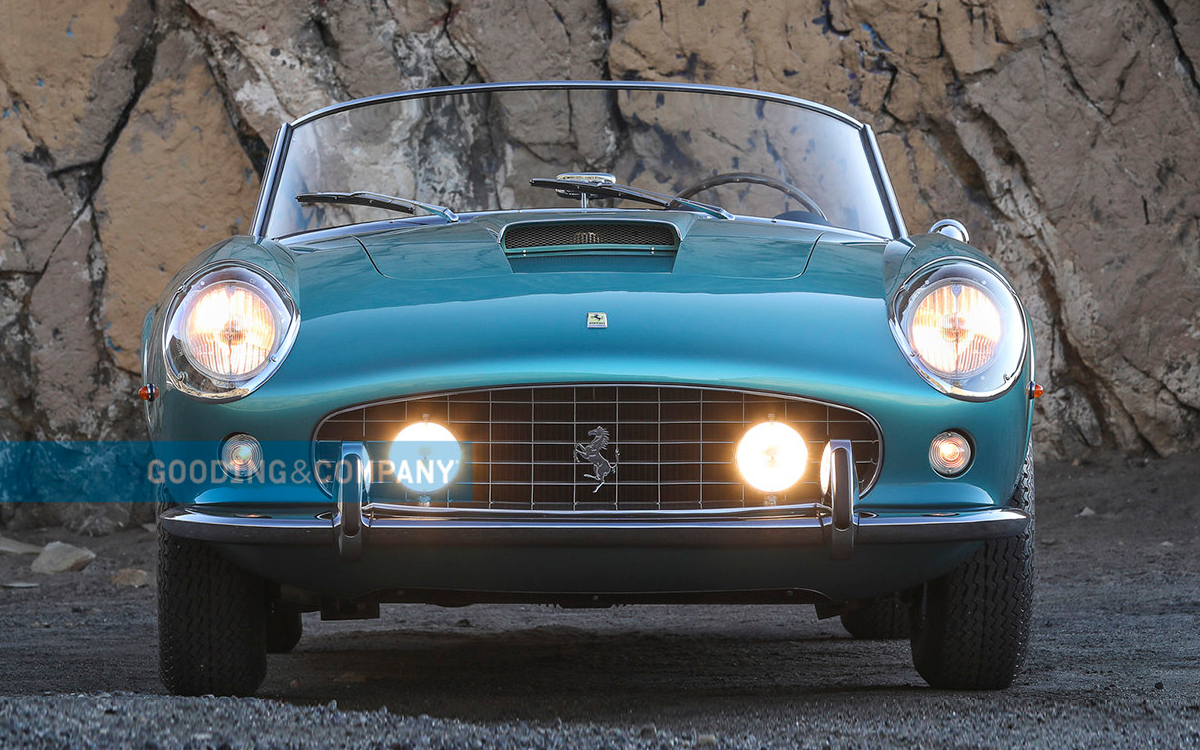
California, the Sequel
Ferrari replaced the 250 GT Competizione TdF with the new 250 GT Short Wheelbase Berlinetta in 1960. The new car rode on a 94.5-inch wheelbase, and at 163.4 inches long, it was 10 inches shorter than the TdF. The SWB continued the TdF’s winning ways, and, not surprisingly, Ferrari saw opportunity for an open car based on the new chassis. This of course became the second version of the 250 GT California.
The Pininfarina redesign took on a tauter, more muscular look, especially at the rear. Ferrari again offered the California Spider with a choice of two front end designs, the open-headlight version or with the sleeker covered-headlight treatment. Thirty-seven customers chose the latter, and many prefer the design today.
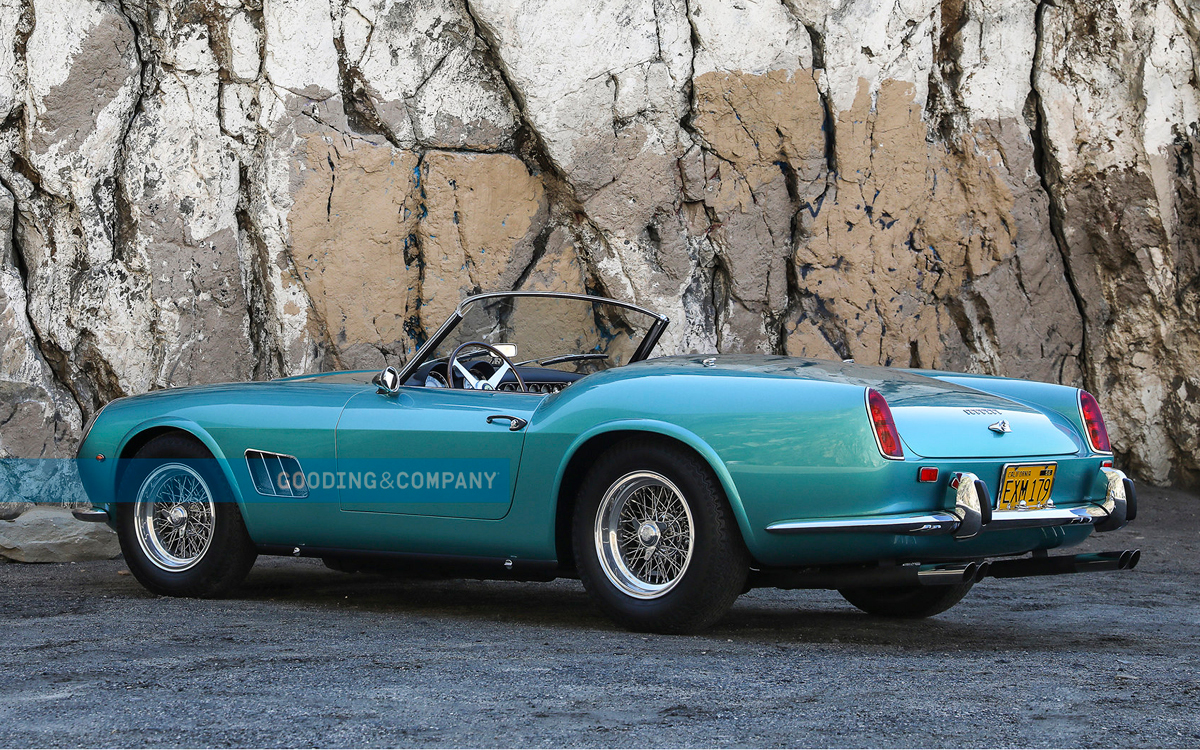
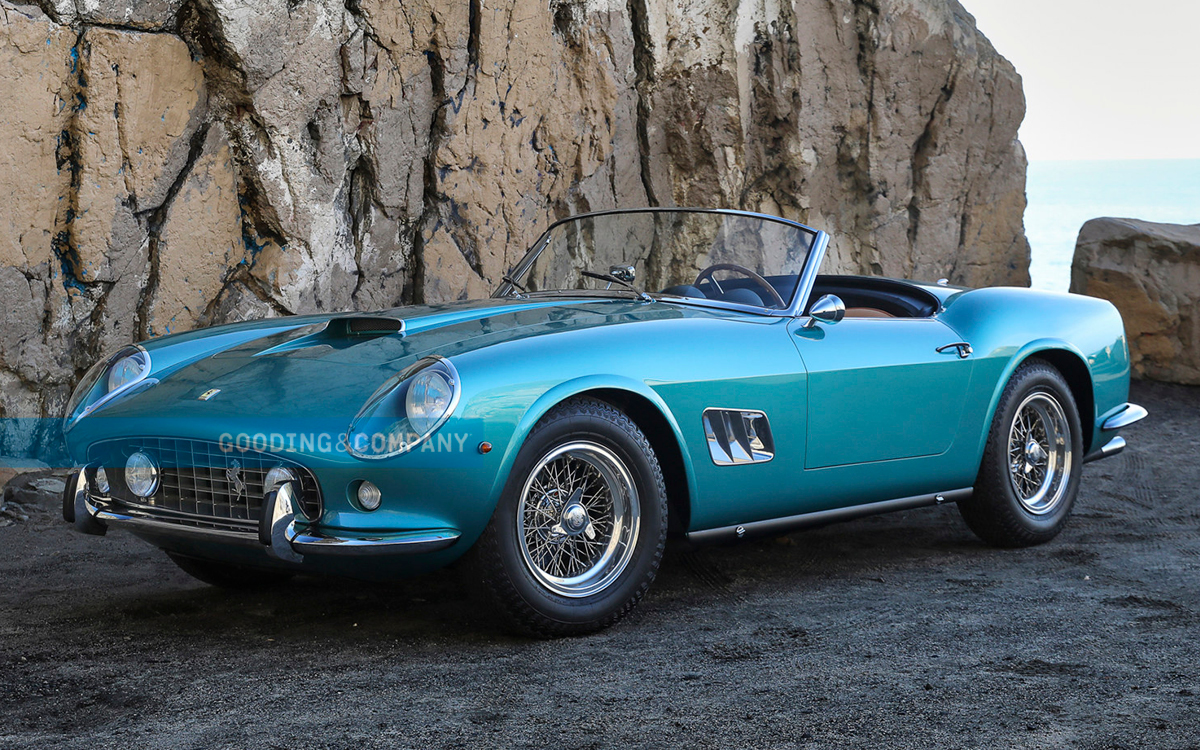
Built to Race if You Wanted
The Ferrari California Spider was at heart a high-performance thoroughbred. The chassis shared with the 250 GT SWB had four-wheel disc brakes and modern telescopic shock absorbers replacing the obsolete Houdaille rotary shocks of the kind used for decades before. The rear suspension was solid axle on semi-elliptical leaf springs.
Under that long hood, the 3.0-liter single overhead camshaft V-12 engine inhaled through three Weber carburetors. The second series California Spider was smaller and lighter than the earlier car, and the combination made for a ferociously fast car for the day. Some owners did race their Spiders.
According to Gooding & Company specialists, the offered car was fitted from the factory as new with 42-mm Weber carburetors (in place of 40-mm) and slightly wider-than-stock Borrani wire wheels. It likely produced more than the standard 240 horsepower.
From Hollywood to a Scrapyard
Red is fine for Ferraris, but if you find yourself unable to look away from this 1962 California Spider offered by Gooding & Company, it most assuredly is due to the Azzurro Metallizzato (Metallic Blue) color. The car left the factory in this aquamarine hue, which could probably make even a Pontiac Aztec look good. It is believed the only California Spider painted so.
The car, chassis No. 3099, was born as a star, making its debut at the 1962 New York International Auto Show. From there, it went to its first customer in Southern California. By the late Sixties, it was in the hands of another owner and had been repainted in a deep burgundy color and retrimmed with black leather upholstery.
Around 1970, the car is said to have spun out and hit a curb, damaging the left front wheel, brake rotor, and suspension components, along with the pedal box and exhaust. Remarkably, the body and powertrain were not damaged. The owner, though, sold the car to Rudi Klein, proprietor of Porsche Foreign Auto Wrecking in Carson, California.
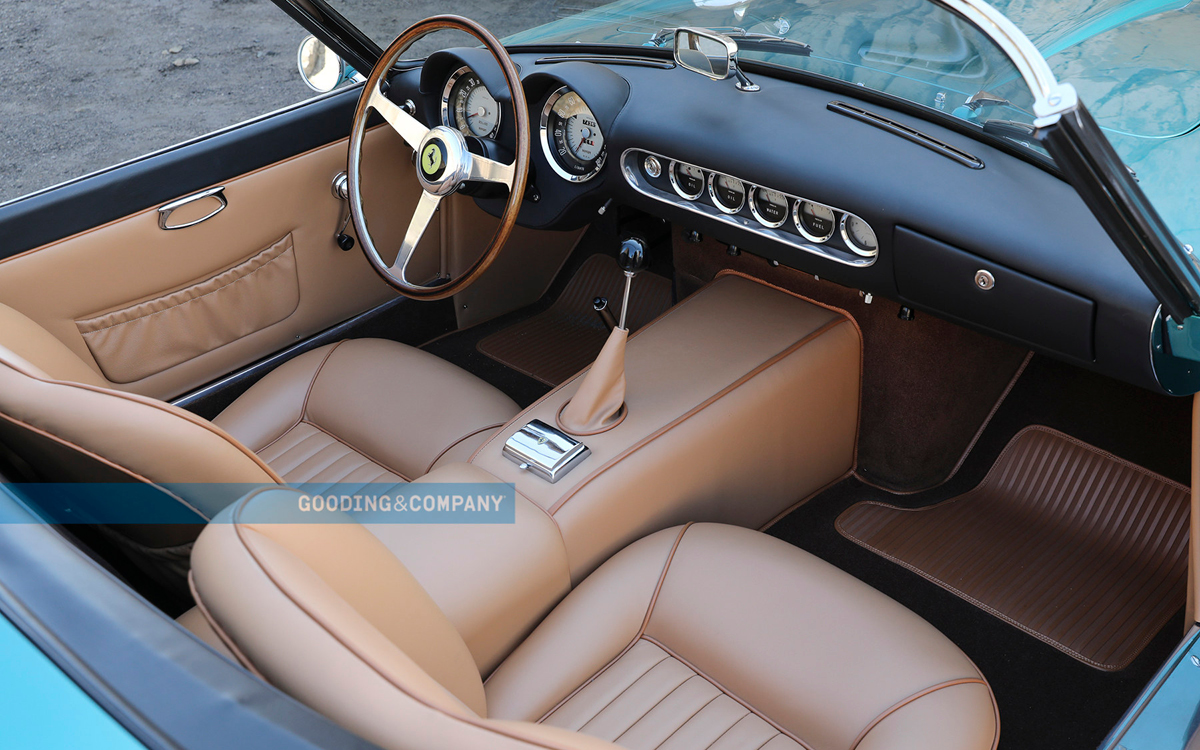
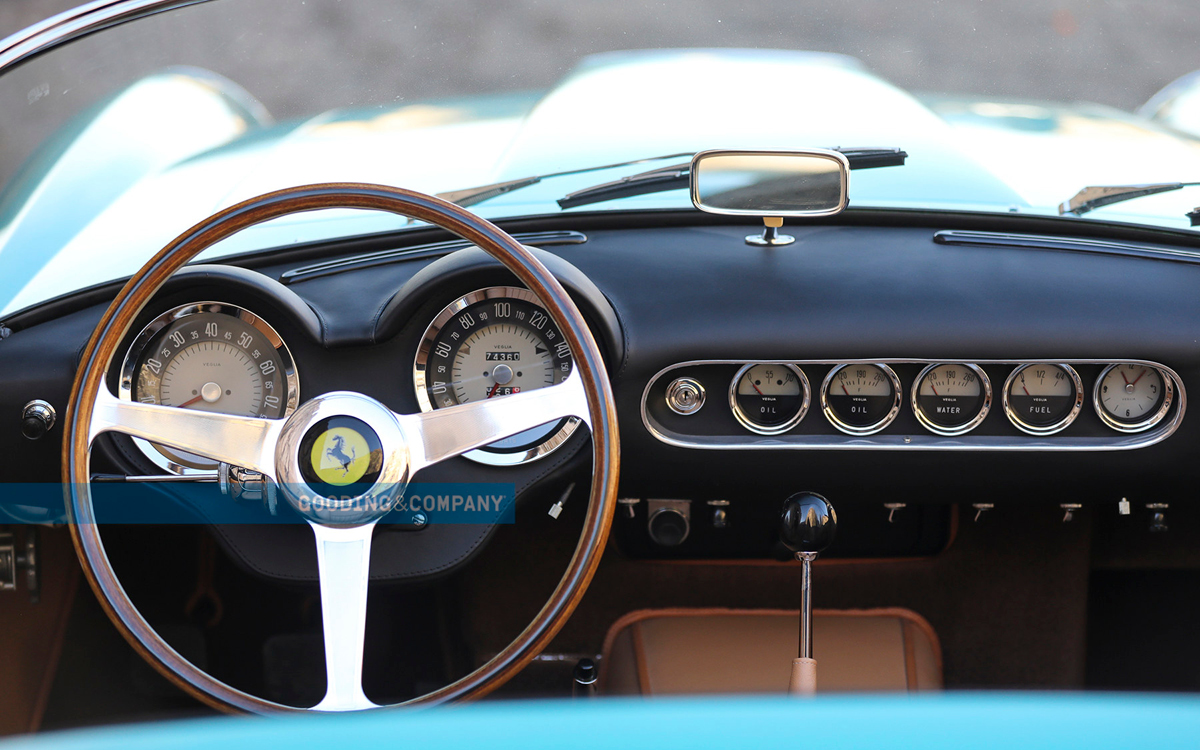
Sale of the Century
Some in the hobby will recognize Klein as an enigmatic car collector/hoarder who had amassed not only a substantial number of exotics used as parts cars, but also a secret stash of collectibles. Charles Betz and Fred Peters, two local Ferrari collectors who bought parts from Klein spotted the Spider, but it would take two years of needling to get him to sell. He finally did in 1972 … for a reported $2,400! For perspective, that was just a few hundred dollars more than a new small car with a kicking horse logo, the Ford Pinto. Betz later recalled, “It started instantly and idled perfectly. There was no smoke coming from the exhaust and it sounded great.”
They waited until the early 2000s to restore the Ferrari to concours condition, completing in 2004. The California Spider won multiple awards and earned full Ferrari Classiche certification in June 2008, meaning it retains its original chassis, body, and driveline.
In 2008, Betz and Peters sold the car to the consignor offering at the Gooding & Company auction. As the young Mr. Bueller widely quipped in the film, “It is so choice. If you have the means, I highly recommend picking one up.”
